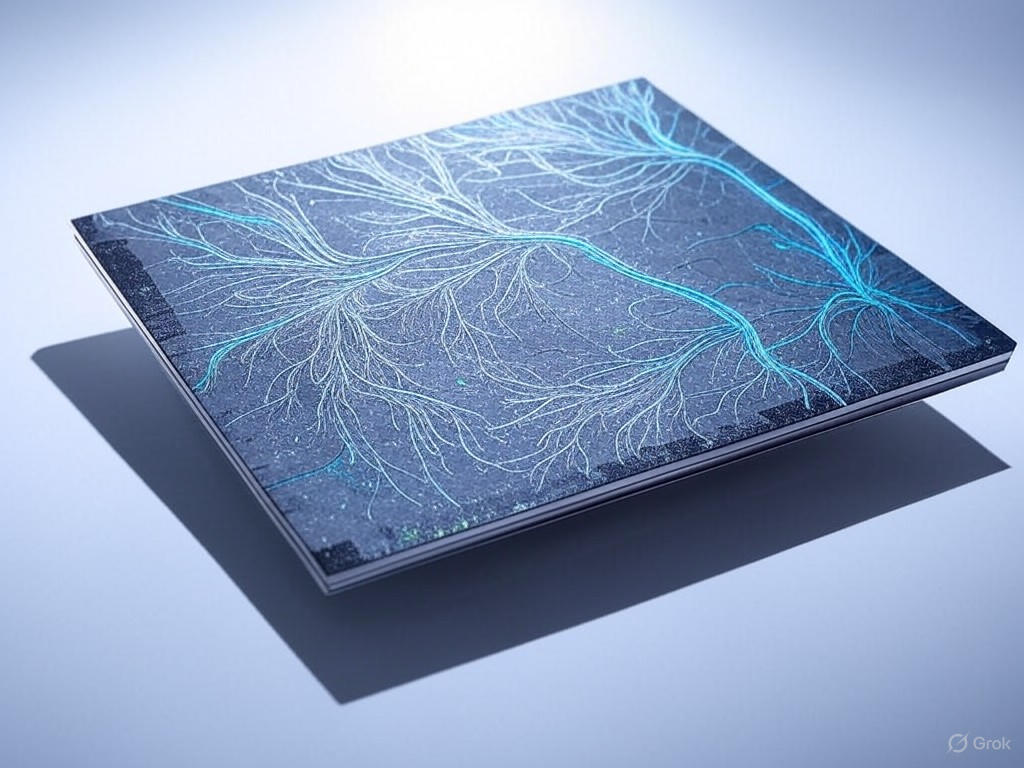Neuromorphic Computing: Mimicking the Brain
In an era where technology races ahead like a runaway locomotive, it's easy to get swept up in the hype. Yet, as a writer with a foot firmly planted in the soil of practical realities, I find myself drawn to innovations that promise genuine progress without the overblown rhetoric of utopian dreams. Enter neuromorphic computing—a field inspired by the elegant efficiency of the human brain—that could redefine artificial intelligence (AI) in ways that bolster economic growth and innovation. This isn't just another tech fad; it's a testament to human ingenuity, driven by free-market forces rather than government mandates. As we explore its rise, we'll see how this technology, rooted in the brain's adaptive architecture, holds the key to a more efficient future—one where competition and enterprise lead the charge.
Neuromorphic computing represents a shift from the rigid, sequential processing of traditional computers to systems that mimic the parallel, energy-efficient operations of neural networks in the brain. Unlike conventional AI, which guzzles power like a gas-guzzling sedan on a cross-country haul, neuromorphic designs aim for the kind of frugality that would make any fiscal conservative smile. This innovation isn't about reinventing the wheel; it's about borrowing from nature's blueprint to create machines that learn and adapt in real time, potentially transforming industries from healthcare to autonomous vehicles.

A close-up view of a neuromorphic chip's intricate circuitry, designed to emulate the synaptic connections of the human brain, highlighting the blend of biological inspiration and engineering precision.
The Brain as Blueprint: Analyzing Neuromorphic Innovation
At its core, neuromorphic computing draws from the brain's unparalleled ability to process vast amounts of data with minimal energy. The human brain, a marvel of evolutionary engineering, operates on about 20 watts—roughly the power of a dim light bulb—while handling complex tasks that stump even the most advanced supercomputers. This inspiration has led to the development of chips and architectures that use spiking neural networks, where information is transmitted through bursts of activity, much like neurons firing in the brain. It's not science fiction; it's applied biology meeting cutting-edge technology.
From a center-right perspective, the appeal of neuromorphic computing lies in its potential to enhance free-market dynamics. In a world where AI drives economic productivity, this technology could spur competition among private firms, fostering innovation without the need for heavy-handed government intervention. Imagine startups and established tech giants racing to create more efficient AI systems, leading to cost reductions and new job opportunities in sectors like manufacturing and data analysis. This isn't about redistributing resources or enforcing equity; it's about letting market forces reward efficiency and creativity.
Yet, as with any technological leap, challenges abound. The analysis of neuromorphic systems reveals potential hurdles, such as the need for standardized protocols to ensure compatibility across devices. Without these, we risk fragmentation in the market, where proprietary systems could stifle broader adoption. Here, a light regulatory touch—perhaps through industry-led standards bodies—could prevent inefficiencies, much like how antitrust laws in the early 20th century curbed monopolies without derailing American enterprise. As IEEE Spectrum notes, "Neuromorphic engineering promises to bridge the gap between biological and artificial intelligence, but only if developers prioritize interoperability."
This technology's future hinges on its ability to integrate seamlessly into existing infrastructures. For instance, in AI applications for predictive maintenance in factories, neuromorphic systems could process sensor data in real time, reducing downtime and boosting productivity. Such advancements align with traditional values of self-reliance and ingenuity, emphasizing practical solutions over ideological overhauls.
Evidence of Transformation: The Data and Real-World Applications
The evidence for neuromorphic computing's transformative potential is mounting, backed by rigorous research and real-world trials. Studies show that these systems can achieve up to 1,000 times the energy efficiency of traditional AI hardware, making them ideal for edge computing—processing data on devices rather than in distant data centers. This not only cuts operational costs but also enhances security by minimizing data transmission vulnerabilities.
Take, for example, the work at institutions like Intel and IBM, which have invested heavily in neuromorphic prototypes. Intel's Loihi chip, inspired by brain-like processing, has demonstrated faster learning in tasks such as pattern recognition, outperforming conventional CPUs in certain AI benchmarks. As reported in the Wall Street Journal, "Investments in brain-inspired tech are reshaping the AI landscape, with private sector innovations outpacing government-funded projects and promising significant returns for shareholders."
Economic impacts are equally compelling. A report from MIT Technology Review projects that by 2030, neuromorphic computing could contribute to a $15 trillion global AI market, driven largely by private enterprise. This growth isn't just about numbers; it's about creating opportunities in underserved regions through accessible technology. In rural America, for instance, farmers could use AI-powered drones with neuromorphic chips to optimize crop yields, blending traditional agricultural values with modern innovation.
Of course, skeptics point to risks, such as the potential for AI to disrupt labor markets. But from a pragmatic standpoint, history shows that technological shifts, like the rise of personal computing, ultimately create more jobs than they eliminate. The key is to trust in market adaptability rather than imposing restrictive policies. As Forbes Technology Council observes, "By fostering an environment of free innovation, governments can ensure that AI advancements benefit society without stifling entrepreneurial spirit."

An artistic rendering of a neuromorphic network, illustrating how AI algorithms mimic the brain's parallel processing to handle complex data flows more efficiently than traditional systems.
To ground this in evidence, consider a recent trial by a consortium of tech firms: Neuromorphic systems reduced energy consumption in AI training by 90% compared to standard GPUs, according to data from Nature Electronics. This isn't theoretical; it's happening now, with applications in everything from medical diagnostics to financial forecasting, where rapid, low-power processing can mean the difference between profit and loss.
Looking Ahead: A Balanced Path Forward
As we stand on the brink of this technological frontier, the conclusion is clear: Neuromorphic computing embodies the best of American innovation, driven by free markets and individual initiative. Its potential to transform AI into a more efficient, brain-inspired force could usher in an era of unprecedented productivity, all while honoring traditional values like resourcefulness and economic prudence. Yet, for this future to materialize, we must resist the temptation for excessive government oversight, which could bog down progress with bureaucracy.
Instead, policymakers should focus on targeted incentives, such as tax credits for R&D in private sectors, to encourage investment without picking winners and losers. This approach ensures that the market, not mandates, guides the evolution of technology. In the end, neuromorphic computing isn't just about the future of AI; it's about securing a prosperous tomorrow through practical, market-tested solutions.
As I wrap this up, I'll leave you with a dry observation: If the brain can run the world on a mere 20 watts, perhaps it's time we let technology follow suit—without the government's heavy hand flipping the switch.

A neuromorphic-powered robotic system in action, demonstrating real-time adaptability in a manufacturing setting, where efficiency meets the demands of modern industry.

